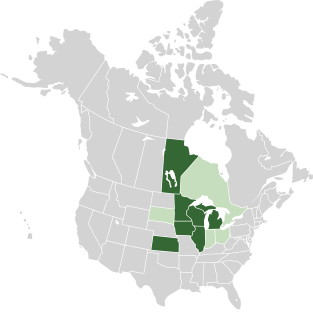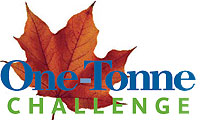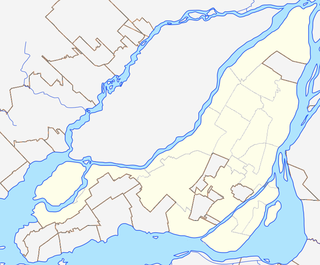 W
WBritish Columbia Archaeological Assessment Process: British Columbia has set forth a directive process in order to regulate the development of land by private and government identities, this is known as the Heritage Act. British Columbia holds cultural sites throughout its geography and is home to many famous aboriginal archaeological sites, such as the Kwäday Dän Ts'ìnchi, which was an archaeological site containing a frozen person in British Columbia's Tatshenshini-Alsek Park. British Columbia archaeological sites are held in accordance with both the Heritage Act and the federal Environmental Assessment Act, which regulates the areas where developers can utilize and where the provincial government can build infrastructure. This process has not been put into place to discourage development, but has been put into place to regulate historic cultural sites in order to retain historic areas, sites, ecofacts, and artefacts.
 W
WCanadian Rivers Day is held annually on the second Sunday in June to promote public awareness of the importance of preserving the heritage and health of Canada's rivers. Participating in Rivers Day helps to spread the message that rivers are vital to maintain a healthy ocean and a healthy earth.
 W
WEarth Rangers is a Canadian environmental education and conservation non-profit aimed specifically at youth. The goal of the organization is to educate children and their families about biodiversity, inspire them to adopt sustainable behaviours, and empower them to become directly involved in protecting animals and their habitats. Earth Rangers currently has more than 140,000 members across Canada, and visits 800 elementary schools every year with an educational live animal show.
 W
WSarnia's Chemical Valley and the surrounding area are home to sixty-two facilities and refineries. A widely quoted 2007 Ecojustice Canada report showed those large industrial facilities located within 25 km of Sarnia, Ontario, Canada emitted more than 131,000 tonnes of air pollution in 2005, a toxic load of more than 1,800 kilograms per resident.
 W
WThe native flora of Saskatchewan includes vascular plants, plus additional species of other plants and plant-like organisms such as algae, lichens and other fungi, and mosses. Non-native species of plants are recorded as established outside of cultivation in Saskatchewan, of these some non-native species remain beneficial for gardening, and agriculture, where others have become invasive, noxious weeds. Saskatchewan is committed to protecting species at risk in Canada. The growing season has been studied and classified into plant hardiness zones depending on length of growing season and climatic conditions. Biogeographic factors have also been divided into vegetative zones, floristic kingdoms, hardiness zones and ecoregions across Saskatchewan, and natural vegetation varies depending on elevation, moisture, soil type landforms, and weather. The study of ethnobotany uncovers the interrelation between humans and plants and the various ways people have used plants for economic reasons, food, medicine and technological developments. The Government of Saskatchewan has declared 3 indigenous plants as provincial symbols.
 W
WHarbour Solutions is a Canadian public infrastructure project in Halifax, Nova Scotia.
 W
WKosmos 954 was a reconnaissance satellite launched by the Soviet Union in 1977. A malfunction prevented safe separation of its onboard nuclear reactor; when the satellite reentered the Earth's atmosphere the following year, it scattered radioactive debris over northern Canada, some of the debris landing in the Great Slave Lake next to Fort Resolution, NWT. This prompted an extensive cleanup operation known as Operation Morning Light.
 W
WIn the last 30 years Lake Winnipeg has experienced a steady surge of blue-green algae growth and although algae grows naturally in the lake, excessive blue-green algae blooms are caused by high ratio levels of nitrogen and phosphorus draining into the lake via rivers and surface runoff. Up to five and a half million people rely on the health of Lake Winnipeg. The lake is an economical powerhouse that supports a $100 million a year tourism industry and a $25 million a year fishing industry. Healthy algae populations play an important role in keeping lake Winnipeg's ecological systems balanced. Green algae provides food for zooplankton, which are then eaten by larger fish in the lake. However the toxins that blue-green algae release can destroy fresh water ecosystems and can be dangerous for humans and other species. Very high levels of the algae toxin microcystin closed Victoria Beach off from the public in the summer of 2003. Grand Beach and other surrounding settlements along the lake are often closed for a short time during summer months due to E. coli and algae-toxin related threats. Immense algae blooms have appeared in the northern part of Lake Winnipeg in the last decade with hundreds of square kilometers of the lake covered with a thick toxic layer of blue-green algae. Local residents in surrounding communities say the blue-green algae is well known for creating deadly water conditions in prairie dugouts and have been known to even kill livestock. Commercial and aboriginal fishermen on the lake often find their nets temporarily disabled during the summer months because of the thick algae conditions. The Lake Winnipeg algae blooms are considered the worst algae problem of any large freshwater lake in the world.
 W
WThe Midwestern Greenhouse Gas Reduction Accord is a regional agreement by six governors of states in the US Midwest who are members of the Midwestern Governors Association (MGA), and the premier of one Canadian province, whose purpose is to reduce greenhouse gas emissions to combat climate change. The accord has been inactive since March 2010, when an advisory group presented a plan for action to the association with a scheduled implementation date of January 2012. Signatories to the accord are the US states of Minnesota, Wisconsin, Illinois, Iowa, Michigan, Kansas, and the Canadian Province of Manitoba. Observers of the accord are Indiana, Ohio, and South Dakota, as well as the Canadian Province of Ontario.
 W
WThe National Pollutant Release Inventory (NPRI), established in 1992, and launched in 1993, is the national pollutant release and transfer register of Canada. This list of pollutants contains releases from a facility to the air, water, and land along with disposals at, or from a facility. Reported information is used in the creation of pollution management plans and to inform Canadians about their environment.
 W
WThe province of New Brunswick has created and implemented various Acts, such as the Clean Environment Act, Clean Air Act, and the Clean Water Act, throughout history to ensure that the environment is considered and protected throughout various project. These acts describe the process that will be undertaken to assess the impact of projects, and the steps to be taken when certain situations arise.
 W
WThe One-Tonne Challenge was a challenge presented by the Government of Canada in March 2004 for Canadians to reduce their greenhouse gas emissions by one tonne each year. The figure represented 20% of total greenhouse gas output by Canadians at the time and aimed to help the country reach its Kyoto Protocol emission reduction targets. The Liberal Government under Jean Chrétien and Paul Martin approved over $45 million to fund the program from 2003 to 2006.
 W
WThe Parc d'entreprises de la Pointe-Saint-Charles, formerly known as the Montreal Technoparc and Adaport Victoria, is an industrial park and former industrial dump in the Pointe-Saint-Charles neighbourhood of Montreal, between the Champlain and Victoria bridges.
 W
WLocated in northwest-central Alberta, the Peace River oil sands deposit is the smallest of four large deposits of oil sands of the Western Canadian Sedimentary Basin formation.
 W
WRainwater harvesting is becoming a procedure that many Canadians are incorporating into their daily lives, although data does not give exact figures for implementation. Rainwater can be used for a number of purposes including stormwater reduction, irrigation, laundry and portable toilets. In addition to low costs, rainwater harvesting is useful for landscape irrigation.
 W
WSustainable Development Strategy for organizations in Canada is about the Government of Canada finding ways to develop social, financial, and environmental resources that meet the needs of the present without compromising the ability of future generations to meet their own needs in Canada. A Sustainable Development Strategy for the organization needs to be developed that establishes the Sustainable Development goals and objectives set by the Auditor General Act of Canada and provides the written policies and procedures to achieve them. Sustainable Development is based on responsible decision-making, which considers not only the economic benefits of development, but also the short-term and long-term, Canadian environment and environmental impacts.
 W
WThe Sydney Tar Ponds were a hazardous waste site on Cape Breton Island in Nova Scotia, Canada.
 W
WWestern Climate Initiative, Inc. (WCI) is a 501(c)(3) non-profit corporation which administers the shared emissions trading market between the American state of California and the Canadian province of Quebec as well as separately administering the emissions trading market of the Canadian province of Nova Scotia. It also provides administrative, technical and infrastructure services to support the implementation of cap-and-trade programs in other North American jurisdictions. The organization was originally founded in February 2007 by the governors of five western states with the goal of developing a multi-sector, market-based program to reduce greenhouse gas emissions; it was incorporated in its current form in 2011.